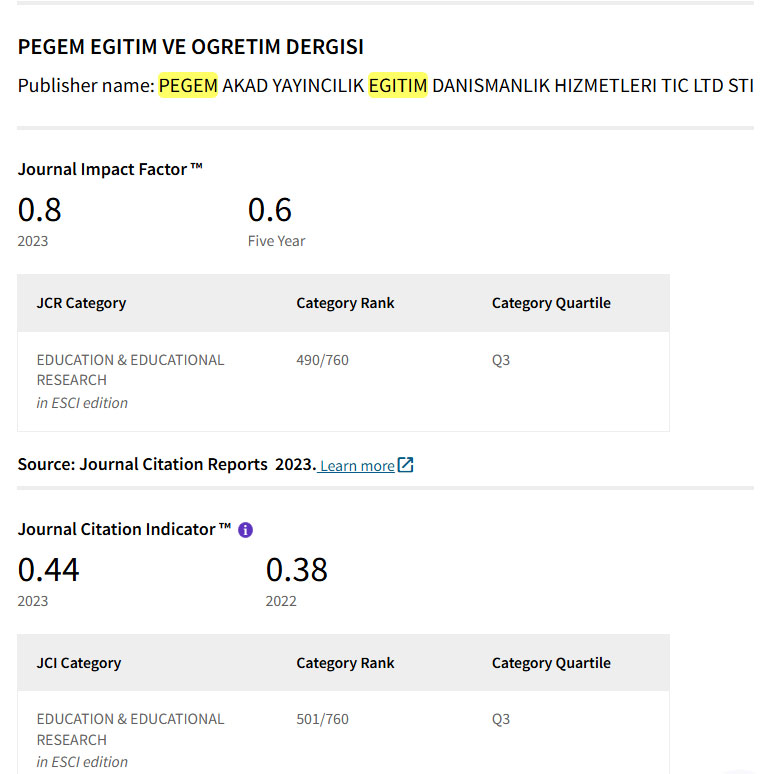From Classrooms to Codes: Measuring the Perceptions of School Administrators and Teachers Towards Artificial Intelligence
Keywords:
Artificial intelligence, school administrator, teacher, perception, scaleAbstract
Technology is not just a tool, but a reflection of the relationship that humans establish with the knowledge they produce. In this context, a scale was created to measure educators’ perception of artificial intelligence in Turkey and validity and reliability analyses were conducted. The research was conducted with three independent sample groups. In the first stage, the 12-item draft scale was applied to 233 participants and reduced to 8 items1 as a result of EFA. In the second stage, the scale was applied to 153 participants and CFA was performed, confirming a one dimensional structure, and acceptable fit indices were reached. In the third stage, the temporal stability and criterion validity of the scale were evaluated with 48 participants using the test-retest method. The reliability of
the scale was determined by Cronbach’s Alpha coefficient being 0.62 and KMO value being 0.90. Additionally, various statistical analyses, including item-total correlation, item-residual analysis, and test-retest correlation analysis, were conducted to ensure the validity and reliability of the scale.
Downloads
References
Anderson, L. M. (1988). Likert scales. In Educational Research Methodology and Measurement: An International Handbook. Pergamon Press.
Atteh, E. (2023). The recommended instructional approach in Ghanaian basic schools: A review of constructivist approach of teaching and
learning in the mathematics classroom. Asian Journal of Education and Social Studies, 47(1), 15–25. https://doi.org/10.9734/ajess/2023/v47i11013
Additional Files
Published
How to Cite
Issue
Section
License

This work is licensed under a Creative Commons Attribution-NonCommercial 4.0 International License.
Attribution — You must give appropriate credit, provide a link to the license, and indicate if changes were made. You may do so in any reasonable manner, but not in any way that suggests the licensor endorses you or your use.
NonCommercial — You may not use the material for commercial purposes.
No additional restrictions — You may not apply legal terms or technological measures that legally restrict others from doing anything the license permits.



